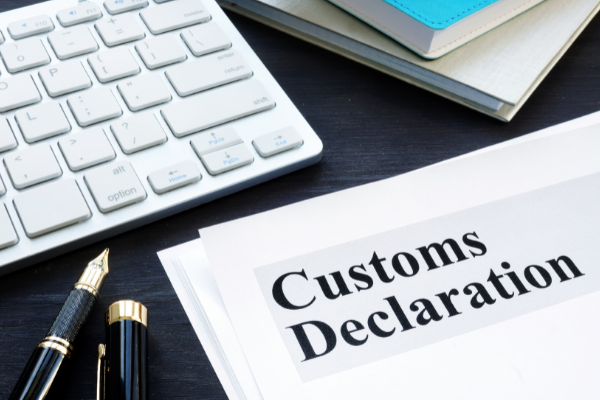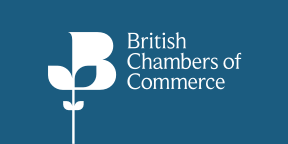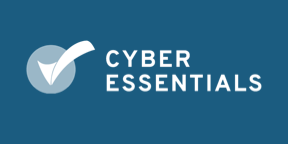BY:
SHARE:

As CDS evolves, it is becoming increasingly important to ensure that the correct document codes and reasons for export or import are accurately declared.
Compliance has always been crucial. However, with the Customs Declaration Service now in full swing, any non-compliance will lead to immediate declaration rejections, a contrast to the previous practice of identifying issues during audits.
Document codes, document IDs, and reasons for the import or export must match.
Ensuring the correct document code, the correct document code ID, or reason for import or export, has always been paramount to ensuring that we, as importers or exporters, are compliant with regulations.
If we are declaring a document code for preference under a trade agreement or a code confirming exemption from an export licence, we, as traders, are responsible for ensuring that the correct document codes and declaration references are accurate on our Customs Declarations.
Depending on the document being declared, there are two potential additional fields that must be completed: the document ID, and the reason field.
The reason field is used to claim an exemption from a licence or measure that may be applicable for the product.
Understanding the Broader Implications
U116 code change from U110: Claiming preference using the Invoice Statement: New coding valid from 14th June
If we, as an importer, are claiming preference under the UK-EU TCA, we must ensure that when we claim using the invoice statement as the reason, the document identification reference matches and is included in the document ID under U116.
The new document code, U116, is now in effect as of June 14, 2025, replacing the previous code, U110.
Important note:
Importers must use the invoice number with the document code U116, not the REX number.
Using the REX number is a non-compliance with this document code.
Similarly, claims for preference at import have been rejected by HMRC because the reason for import was coded as "Importers Knowledge." Still, the reason for the claim was an invoice statement.
HMRC is not tolerating this sort of error, and importers are finding that duty is therefore payable due to inconsistencies on the import declarations.
What has changed?
From a compliance aspect, nothing has changed. The compliance requirements for document ID and Document reference numbers have always been required on CDS. Keeping up with the change to CDS coding is the responsibility of the trader. If the trader is using an agent, the trader is responsible for verifying that the agent accurately makes the declaration.
The CDS changes
Following the CDS update 4.8.0 and 4.8.0.1, CDS now validates the ID or reason fields for documents that are declared.
From now on, a reason of NAI, or not applicable for an exemption, for example, will no longer be accepted. Traders must follow the guidance provided in the UK Trade Tariff, Volumes 2 and 3.
CDS is now validating the information provided against the requirements outlined in the Tariff Volumes. Any data mismatch will cause the declaration to be rejected
An example of this update from 4.8.0 is a snippet from our article here
CDS 4.8.0 update – Validation now active on CDS
The Document ID field must be completed for the following Codes:
‘C121’, ‘L155’, ‘L156’, ‘U078’, ‘U101’, ‘U120’, ‘U121’, ‘U122’, ‘X859’, ‘X860’, ‘X861’, ‘X862’, ‘X863’, ‘X864’, ‘X865’, ‘Y161’, ‘Y751’, ‘Y752’, ‘Y753’, ‘Y754’, ‘Y755’, ‘Y756’, ‘Y766’, ‘Y767’, ‘Y871’, ‘Y881’, ‘Y883’, ‘Y885’, ‘9L49’
The Document Reason Field must be completed for these Codes:
Y147’, ‘Y168’, ‘Y233’, ‘Y234’, ‘Y753’, ‘9Y04’, ‘9Y05’, ‘9Y06’, ‘9Y15’, ‘9Y49’
Electronic Status Codes (EA, EE, EL, EP, or ES) have been added to these Codes:
‘L155’, ‘L156’, ‘X859’, ‘X860’, ‘X861’, ‘X862’, ‘X863’, ‘X864’, ‘X865’.
If the declared document is an electronic licence and a non-electronic Status Code is declared, the declaration will be rejected.
CDS Rejections - Example
If we are to take the first document code C121 as an example, which covers diamonds from Russia, appendix 5a states that the ID to be completed is “Enter the reference number of the certificate certifying that the diamonds are not mined, processed or produced in Russia.”
CDS will now validate this, and if not completed correctly, the entry will be rejected accordingly.
So, how can I be compliant?
Importers and exporters are required to review the UK Trade Tariff Volumes 2 and 3.
If you are using a third party to complete the declarations for you, ensure that the document code and reference are included in the clearance instructions.
Document codes can be found in Appendix 5A of the UK Trade Tariff Volume 3. These are entered in data element 2/3 for both imports and exports.
By referencing all the information in your clearance instructions, you are ensuring that you are evidencing compliance.
Note: The classification and document codes in the UK Trade Tariff can be updated weekly, and CDS is regularly updated.
OneCall™ Email assistance as and when required; A one-call solution for all your import, export and customs enquiries. Export help. Import help. Customs help.
Stay informed about customs and international trade matters by subscribing to our OneCall™ service. This comprehensive offering includes a dedicated email helpline for support, timely practical updates direct to your inbox (Did You Know?), monthly UK Customs & Trade Briefings and access to an interactive members' area with an exclusive community for our subscribers.
International Trade Updates & Spotlight Newsletter
Subscribe to our free information emails covering international trade topics...
MORE INDUSTRY INSIGHTS...










